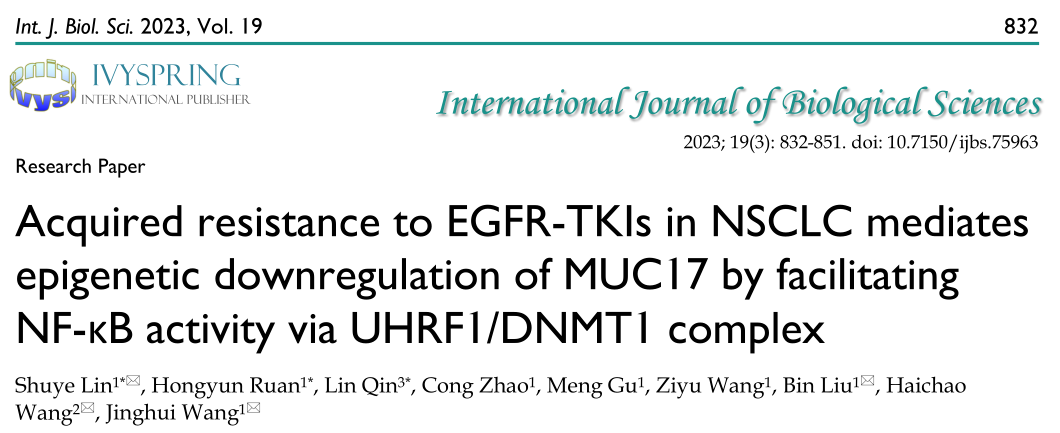预约演示
更新于:2025-05-07
MZF1
更新于:2025-05-07
基本信息
别名 myeloid zinc finger 1、MZF、MZF-1 + [7] |
简介 Binds to target promoter DNA and functions as a transcription regulator. Regulates transcription from the PADI1 and CDH2 promoter. May be one regulator of transcriptional events during hemopoietic development. |
关联
1
项与 MZF1 相关的药物靶点 |
作用机制 MZF1 inhibitors [+1] |
在研机构 |
原研机构 |
最高研发阶段临床前 |
首次获批国家/地区- |
首次获批日期1800-01-20 |
12
项与 MZF1 相关的临床试验NCT01796795
A Double-blind, Randomized, Vehicle-controlled, Parallel-group, Phase II Dose-ranging Study to Evaluate the Efficacy and Safety of SR-T100 Gel in Common Warts (CW) Patients.
This phase II study is to evaluate the efficacy of SR-T100 gel in complete clearance of target warts at different concentrations (1.0% and 2.3% of SM in Solanum undatum plant extract) in patients with CW.
开始日期2030-09-01 |
申办/合作机构 |
NCT04184011
A Prospective Registry Study to Evaluate the Long-Term Efficacy and Safety of Superficial Radiation Therapy (SRT) for the Treatment of Recurrent Keloid Scars
Keloid formation in response to skin trauma inflicts about 18 million individuals. A key impediment in successful treatment of keloids is that the predominant treatments, particularly surgical excision and shaving, tend to initiate the regrowth of the keloid at the excision site, and therefore, recurrence rates are high. There is much evidence to demonstrate that following surgical excision procedures with a course of radiation therapy can significantly reduce recurrence rates to as little as 10% or below. This prospective study is to evaluate this claim.
开始日期2019-08-15 |
申办/合作机构 |
NCT03693924
A Retrospective Registry Study to Evaluate the Long-Term Efficacy and Safety of Superficial Radiation Therapy (SRT) for the Treatment of Recurrent Keloid Scars.
Keloid formation in response to skin trauma inflicts about 18 million individuals. A key impediment in successful treatment of keloids is that the predominant treatments, particularly surgical excision and shaving, tend to initiate the regrowth of the keloid at the excision site, and therefore, recurrence rates are high. There is much evidence to demonstrate that following surgical excision procedures with a course of radiation therapy can significantly reduce recurrence rates to as little as 10% or below. This retrospective study is to evaluate this claim.
开始日期2018-11-15 |
申办/合作机构 |
100 项与 MZF1 相关的临床结果
登录后查看更多信息
100 项与 MZF1 相关的转化医学
登录后查看更多信息
0 项与 MZF1 相关的专利(医药)
登录后查看更多信息
251
项与 MZF1 相关的文献(医药)2025-12-31·Bioengineered
Statement of Retraction: Extracellular vesicles derived from HBMSCs improved myocardial infarction through inhibiting zinc finger antisense 1 and activating Akt/Nrf2/HO-1 pathway
Article
2025-04-01·Translational Oncology
Single-cell insights into HNSCC tumor heterogeneity and programmed cell death pathways
Article
作者: Chai, Yuanhao ; Zhang, Ziwei ; Shao, Wenwen ; Zhang, Jianlin
2025-03-01·Biochemical and Biophysical Research Communications
Discovery of myeloid zinc finger (MZF) 1 nuclear bodies
Article
作者: Calderwood, Stuart K ; Eguchi, Takanori
1
项与 MZF1 相关的新闻(医药)2023-03-15
·生物谷
非小细胞肺癌(NSCLC)是最常见的癌症组织学类型,约占癌症患者的85%。表皮生长因子受体(EGFR)突变作为NSCLC中的重要致癌驱动因素,为晚期疾病患者的生物标志物导向治疗模型拉开了帷幕。
非小细胞肺癌(NSCLC)是最常见的癌症组织学类型,约占癌症患者的85%。表皮生长因子受体(EGFR)突变作为NSCLC中的重要致癌驱动因素,为晚期疾病患者的生物标志物导向治疗模型拉开了帷幕。
许多EGFR酪氨酸激酶抑制剂(TKIs)已经开发出来,包括常用的第一代TKIs吉非替尼和高效的第三代TKIs奥希替尼。尽管这些药物在治疗患者方面疗效显著,但对这些药物的耐药性仍然是一个有待解决的根本挑战。
图片来源:https://pubmed.ncbi.nlm.nih.gov/36778111/
近日,来自首都医科大学的研究者们在Int J Biol Sci.杂志上发表了题为“Acquired resistance to EGFR-TKIs in NSCLC mediates epigenetic downregulation of MUC17 by facilitating NF-κB activity via UHRF1/DNMT1 complex”的文章,该研究表明吉非替尼/奥希替尼(GR/OR)的获得性耐药性促进UHRF1/DNMT1复合物抑制粘蛋白17(MUC17)的表达。GR/OR细胞中的MUC17可作为表观遗传传感器,用于生物监测对EGFR TKI的耐药性。
EGFR TKIs治疗给EGFR突变的非小细胞肺癌患者带来了显著益处。然而,大多数患者在治疗后最终产生获得性抵抗。本研究研究了MUC17在EGFR TKI获得性耐药细胞中的表观遗传效应。研究者们发现,GR/OR细胞增强全基因组DNA超甲基化,主要是在与多种致癌途径相关的5-UTR中,其中GR/OR细胞通过以剂量和时间依赖的方式下调MUC17表达而发挥促癌作用。
GR/OR通过促进DNMT1/UHRF1复合物依赖性启动子甲基化,从而激活NF-κB活性,从而获得耐药性介导的MUC17下调。MUC17通过促进MZF1的表达,增加IκB-α的生成并抑制NF-κB活性。体内结果还表明,DNMT1抑制剂(5-Aza)与吉非替尼/奥西美替尼联合使用可恢复对OR/GR细胞的敏感性。
MUC17在耐药细胞中的分子机制示意图。
图片来源:https://pubmed.ncbi.nlm.nih.gov/36778111/
综上所述,长期接触吉非替尼/奥希替尼可通过UHRF1/DNMT1介导的MUC17表观遗传沉默增强全基因组甲基化,并促进肺癌细胞的耐药性。该结果表明,MUC17通过上调吉非替尼/奥希替尼耐药细胞中的MZF1表达和抑制NF-κB活性来促进药物敏感性。因此,MUC17可以作为一种表观遗传传感器,用于对EGFR TKI的耐药性进行生物监测。(生物谷 Bioon.com)
参考文献
Shuye Lin et al. Acquired resistance to EGFR-TKIs in NSCLC mediates epigenetic downregulation of MUC17 by facilitating NF-κB activity via UHRF1/DNMT1 complex. Int J Biol Sci. 2023 Jan 9;19(3):832-851. doi: 10.7150/ijbs.75963.

临床结果放射疗法
分析
对领域进行一次全面的分析。
登录
或

生物医药百科问答
全新生物医药AI Agent 覆盖科研全链路,让突破性发现快人一步
立即开始免费试用!
智慧芽新药情报库是智慧芽专为生命科学人士构建的基于AI的创新药情报平台,助您全方位提升您的研发与决策效率。
立即开始数据试用!
智慧芽新药库数据也通过智慧芽数据服务平台,以API或者数据包形式对外开放,助您更加充分利用智慧芽新药情报信息。
生物序列数据库
生物药研发创新
免费使用
化学结构数据库
小分子化药研发创新
免费使用
